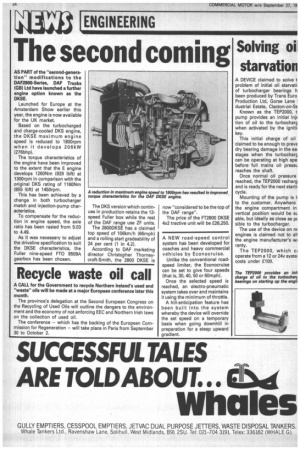The second coming
Page 26

If you've noticed an error in this article please click here to report it so we can fix it.
AS PART of the "second-generation" modifications to the DAF2800-Series, DAF Trucks (GB) Ltd have launched a further engine option known as the DKSE.
Launched for Europe at the Amsterdam Show earlier this year, the engine is now available for the UK market.
Based on the turbocharged and charge-cooled DKS engine, the DKSE maximum engine speed is reduced to 1800rpm when it develops 2 0 6kW (276bhp).
The torque characteristics of the engine have been improved to the extent that the E engine develops 1260Nm (929 lbft) at 1300rpm in comparison with the original DKS rating of 1160Nm (855 lbft) at 1450rpm.
This has been achieved by a change in both turbocharger match and injection-pump characteristics.
To compensate for the reduction in engine speed, the axle ratio has been rasied from 5.03 to 4.49.
As it was necessary to adjust the driveline specification to suit the DKSE characteristics, the Fuller nine-speed FTO 9509A gearbox has been chosen. The DKS version which continues in production retains the 13speed Fuller box while the rest of the DAF range use ZF units.
The 2800DKSE has a claimed top speed of 106km/h (66mph) and a rolling start gradeability of 24 per cent (1 in 4.2).
According to DAF marketing director Christopher Thorneycroft-Smith, the 2800 DKSE is now "considered to be the top of the DAF range".
The price of the FT2800 DKSE 4x2 tractive unit will be £26,250.
A NEW road-speed control system has been developed for coaches and heavy commercial vehicles by Econocruise.
Unlike the conventional roadspeed limiter, the Econocruise can be set to give four speeds (that is, 30, 40, 50 or 60mph).
Once the selected speed is reached, an electro-pneumatic system takes over and maintains it using the minimum of throttle.
A hill-anticipation feature has been built into the system whereby the device will override the set speed on a temporary basis when going downhill in preparation for a steep upward gradient.




























































































































